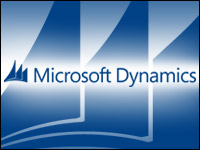
Microsoft on Tuesday kicked off its Microsoft Dynamics Convergence 2014 conference with a keynote address by Executive Vice President Kirill Tatarinov, whose running theme was the need for the companies to be customer-centric to stay competitive.
“Technology has changed the social fabric, transforming how we engage, connect and interact with one another,” Tatarinov said. “In this era of the customer, experience is the new currency.”
The technical repository of that experience? Microsoft, of course, with its array of enterprise and customer-service software offerings.
The company demoed several new products to the sold-out show, including the forthcoming version of Microsoft Dynamics CRM.
“Our whole focus and everything we bring to CRM is about customer-centricity,” Jennifer Pollard, director of product marketing, told CRM Buyer.
“With rise of mobile and social, now the power is really in the customer’s hand,” she said.
The demos and case studies presented by early adopters — the audience heard from one entrepreneur from New Zealand who was a heavy user of the Social Listening function — went over well, Pollard continued. “We have gotten amazing feedback ever since we previewed the product in February.”
Users are absorbing the positioning Microsoft is taking with its CRM platform, Pollard said, which is that if companies want to sell and market efficiently, “they need to mend the seams between the silos in marketing and customer care. Social media can play a huge role in that.”
$200 Per Seat
Another point of interest is the new price point for Dynamics CRM announced at Convergence.
Microsoft is introducing Dynamics CRM Online Enterprise at US$200 per user per month. This price includes Dynamics Marketing — the new marketing capabilities Microsoft added with its acquisition of Marketing Pilot — as well as new capabilities to manage price lists and marketing campaigns included in CRM Online Professional.
It also includes the new Unified Service Desk, in addition to case management capabilities in CRM Online Professional.
Companies will have to tally all the features available to see if it is worthwhile for them, said Laura DiDio, principal of ITIC.
“First, though, let me say that hardly anyone pays list price for enterprise software anymore,” she told CRM Buyer.
Indeed, even Microsoft asterisked the price point in its blog, noting that “actual pricing might vary by geography,” and “other fees may apply for add-on services such as additional storage, testing and production instances.”
A Well-Integrated Platform and Strong Ecosystem
As to the pricing, $200 is at the high end for a CRM Software as a Service offering, DiDio noted. “The problem vendors have is that there is so much competition that it is easy for a company to find something similar in the market for a lower price.”
Ultimately, what companies will decide they are paying for — and they likely will decide it is worth it — is the entire integrated platform that Microsoft offers.
“That is Microsoft’s appeal,” said DiDio. “It has a large ecosystem and an incredibly well-integrated platform.”
These platform synergies were on display at Convergence as the company debuted new or upgraded products.
There was, for example, Microsoft Dynamics AX 2012 R3, which is expected on May 1, 2014. This ERP update includes a new framework to allow businesses to develop and distribute apps for specific scenarios and mobile devices.
Microsoft Dynamics AX 2012 R3 also supports deployment on Windows Azure via Infrastructure as a Service.
“Much of what Microsoft does and develops is with an eye to cross-selling its products,” DiDio said. “This is not necessarily a bad thing — just make sure these products are what your company really needs.”





















































